TRIBUTE: Ellsworth Kelly at 100, Part II
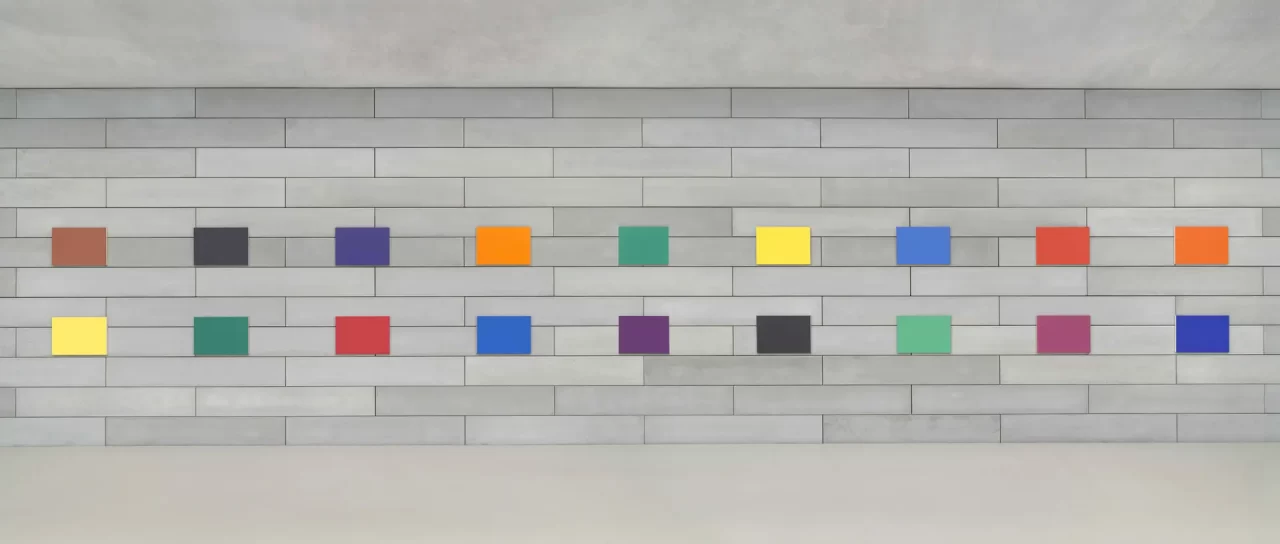 For more than seventy years, Ellsworth Kelly drew inspiration from nature and the world around him to create works that would come to define the history of 20th century abstraction. At times associated with Colour Field Painting and Minimalism but never firmly allied with either movement, Kelly developed a precise lexicon of form, line and color based on acute observations of his immediate environment. He is best known for planes of saturated hues and sharply defined shapes that possess attributes of both painting and sculpture and for engaging the wall and floor in his compositions (Part I).
For more than seventy years, Ellsworth Kelly drew inspiration from nature and the world around him to create works that would come to define the history of 20th century abstraction. At times associated with Colour Field Painting and Minimalism but never firmly allied with either movement, Kelly developed a precise lexicon of form, line and color based on acute observations of his immediate environment. He is best known for planes of saturated hues and sharply defined shapes that possess attributes of both painting and sculpture and for engaging the wall and floor in his compositions (Part I).
By Dimitris Lempesis
Photo: M7 Archive
The exhibition “Ellsworth Kelly at 100” is the result of a multiyear collaboration between Qatar Museums, Doha; Fondation Louis Vuitton, Paris; and Glenstone Museum, Potomac, Maryland. Envisioned as a presentation that charts Kelly’s artistic development from his earliest experiments through his final paintings, this landmark exhibition highlights critical themes that endured throughout his multifaceted practice. Marking the artist’s centennial, it is the most comprehensive display of Kelly’s work in nearly three decades, featuring painting, sculpture, drawing, collage and photography. Ellsworth Kelly was born in Newburgh, New York, in 1923. His studies at the Pratt Institute in Brooklyn were interrupted when he was drafted into the United States Army during World War II. While in service, he designed propaganda posters and uniform patterns as part of a special camouflage battalion called the Ghost Army and served in major combat operations in Europe. Following the war, Kelly resumed his art education at the School of the Museum of Fine Arts in Boston. In 1948, Kelly moved to Paris with support from the G.I. Bill, which covered his travel and living expenses, setting in motion a transformative six-year period of artistic production. After recording fragments of windows, bridges, shadows and road signs in his sketchbook, he began to refine shapes by reducing depth to two dimensions, relying on monochromatic color and simplifying complex imagery into geometric forms. It was during this time that Kelly first joined multiple painted panels to create a single work. “Window, Museum of Modern Art, Paris” (1949) is composed of two stretched canvases within a single frame and is based on the proportions and arrangement of mullions or dividers that outline the windows at the Musée d’Art Moderne de Paris. With this breakthrough work, he blurred the boundary between painting and sculpture while making a radical departure from representation. Kelly’s time in Paris served as a catalyst for a radical shift in his conception of painting. Immersed in the colorful and fluid forms of Henri Matisse’s paintings, the contours of Constantin Brancusi’s sculptures and Jean Arp’s embrace of chance as a compositional device, Kelly soon abandoned the figurative painting of his formative years in favour of a process initiated by close observations of his surroundings. Demonstrating this approach are two works on view in the exhibition from the series “La Combe”, which Kelly conceived in the summer of 1950 while visiting Villa La Combe in Meschers-sur-Gironde, France. Over the course of a day, Kelly sketched and photographed a flight of stairs while shadows cast from the handrail shifted with the passing hours. He then segmented his composition into nine parts to mimic the steps of the staircase and rotated its orientation to further distance it from its source. The multicolored elements, rendered in bold contrast against white, highlight an implicit tension between foreground and background—a central innovation of the artist’s style. During this period, Kelly’s titles were often revelations, offering clues to the source of his inspiration. The painting “Seine”(1951), a chance arrangement of black-and-white squares in a grid, evokes the flickering of light on the surface of the Parisian river. In contrast to the gestural brushwork of Abstract Expressionist painters like Jackson Pollock and Willem de Kooning, whose superlative style dominated American art in the 1940s, Kelly’s flat monochrome surfaces tend to subdue affect and conceal the artist’s hand. He also partially relinquished decision-making in his art by using chance operations in works such as “Cut Up Drawing Rearranged by Chance” (1950) and “Sanary” (1952), both on view in the exhibition. “Painting for a White Wall” (1952), one of the last paintings the artist made while living in Paris, simplifies the dense array of colors and fields in earlier collages and dispenses with the structured order of the grid. In this pivotal work, the mere juxtaposition of discrete high-key color panels, in this case black and white, creates a dynamic composition. By specifying in the title that the work is intended for a white wall, Kelly declares that the experience of it extends well beyond the perimeter of the canvas. In 1954, Kelly returned to New York City, settling in Coenties Slip, a small neighbourhood on the southeastern tip of Manhattan, where he joined a community of artists that included Robert Indiana, Agnes Martin and Jack Youngerman. This collective of artists shared material and intellectual resources and were united by a common interest to push the boundaries of abstract art. It was during this creative period that Kelly further refined existing forms to their essential features through an increasingly restrained visual vocabulary. He repeatedly returned to the same shapes, producing deceptively simple compositions that resulted from the interaction of a complex set of variables, as evidenced in his early experimentations with rounded forms. Kelly’s first painting to feature an arc is “Atlantic” (1956), which was inspired by a shadow cast across an open book. Rendered in black and white, the painting consists of two panels joined at a seam that corresponds to the binding of the book in which Kelly originally sketched the idea. In “Painting in Three Panels” (1956), Kelly breaks with convention further by creating a single painting out of three panels in varying sizes. While he previously joined multiple canvases, this work is among his first to integrate the negative space between each painted panel into the final composition. Kelly held a deep reverence for the natural world. His fascination with drawing plants began early in his career and continued through the end of his life. Kelly said he “wanted to flatten” the forms he found in nature and likened them to portraits. He invariably omits any suggestion of background or context, allowing the clean strokes of his contoured shapes to take centre stage. The simplified lines and absence of depth result in images that are neither representations nor abstractions but rather the artist’s reflections on form. Since his turn away from figurative painting in 1949, Kelly intentionally concealed evidence of his brushwork in his paintings. As a result, the plant drawings showcase the rare occasions in which the artist allowed his hand to be present. Despite his dedication to the practice, Kelly did not exhibit his plant drawings publicly until 1969, when they were included in the exhibition “New York Painting and Sculpture: 1940–1970” at the Metropolitan Museum of Art in New York. In 1970, Kelly moved from Manhattan to Spencertown, New York, a small town located 130 miles north of the city. In nearby Chatham, he rented a studio in a former opera house that was more spacious than any he had previously occupied, allowing him to produce larger canvases in irregular formats. “Chatham”, a series of large-scale paintings, was the first group to be completed in the new workspace. Kelly built the series around a single premise, composing each painting by placing a horizontal rectangle above a vertical rectangle so that their leftmost edges are level with one another, creating an inverted L shape. Varying the colours and dimensions of each panel resulted in fourteen monumental paintings, each with a palette, tone and balance unique to its own construction.
Kelly began capturing images of his surroundings in the early 1950s in France after borrowing a Leica camera from a friend. Operating like sketches or drawings, these photographs capture Kelly’s fascination with the mundane. Through his lens, linear shadows in a doorway, the tangled curves of a barren branch and even debris scattered on the side of a road become sites of creative potential. Although no photograph can be traced to a specific painting or sculpture as source material, these unembellished images offer insight into the way Kelly observed the world around him. The photographs on view in the exhibition were taken between 1950 and 1982 and are from the collection of the Glenstone Museum. Beginning early in his career, Kelly moved seamlessly between two and three dimensions, reimagining the precisely outlined contours of his painted canvases into reliefs and sculptures. Kelly first made freestanding sculptures in the late 1950s, crafting objects in thinly painted metal. As his studio space and ambition grew, so too did the scope of his sculpture practice. In the late 1970s, he started to expand his range of materials, shaping forms out of raw oak, redwood, iron, steel and aluminium. In 1978, Kelly engaged Peter Carlson of Carlson & Co. to fabricate his sculptures. Carlson’s rigour and engineering expertise enabled the artist to actively pursue public commissions and produce increasingly complex works. One of the first works from their collaboration was “White Curves II” (1978), which takes the fold as its subject—that is, the moment a two-dimensional plane becomes three-dimensional. Fabricated in painted aluminium, the work is composed of two differently sized circular segments situated one on top of the other. The spaces between the painted planes and the wall allow for light to pass through, creating shadows that make the shapes appear as if they could be part of a whole circle that has been folded over itself. Carlson & Co. would become a longtime collaborator, allowing Kelly to execute large-scale sculptures such as “Untitled” (2005), a forty-five-foot-tall site-specific commission located on the grounds of Glenstone Museum. Kelly’s move to upstate New York gave him time and space to reflect. Revisiting old sketches and drawings, he compiled a visual archive of the concepts, themes and shapes that preoccupied him for decades. Reflecting on these past ideas pushed Kelly to explore new ones. In his large studio, he had the ability to scale up forms that were previously ideas in a sketchbook. He mused on subtle curves and crafted increasingly distinctive forms for his bold palette. For Kelly, combining unique shapes with monochromatic surfaces accentuated the objecthood or “presence,” as he often said, of the painted panel. This is illustrated to great effect in “Three Gray Panels” (1987), in which he used the walls of the studio as the ground for the form, enlisting the architecture as an integral component of his overall composition. Throughout his career, Kelly often returned to the relief. Inspired by architectural details he observed in both his travels and daily life, Kelly experimented with the protrusion and recession of painted panels, prompting shifting perspectives across his works’ new geometries. Whether as multi-panel paintings or wooden constructions, as seen in this exhibition, the artist’s work in relief exemplifies his preoccupation with the relationship between painting and sculpture. Included in this exhibition is a suite of artworks, made in 2008 and 2009, in which the layered planes accentuate the presence of each painting. Through their depth and contrasting colours, Kelly’s reliefs invoke language typically reserved for describing sculpture: weight, shadow, balance and space. From his earliest work, Kelly developed and refined a vocabulary of form and color characterised by reduction rather than gesture. His uniformly painted planes of color offer a distinct counterpoint to the spontaneous, expressive techniques of his contemporaries and charted a singular path in American abstraction. The works in the final gallery of the exhibition, made between 1993 and 2014, reflect Kelly’s commitment to geometric shapes and finely modulated color relationships, as well as a return to ideas that consumed him early in his career. Among these ideas is an arrangement of spectral colors (the twelve primary, secondary and tertiary hues of the color wheel) that Kelly explored in the Spectrum series, starting in Paris in 1953. Over the course of 61 years, he made nine paintings in the series, concluding with “Spectrum IX” (2014). Composed of twelve joined panels of carefully blended paints, this last example shows Kelly’s masterful handling of chromatic variation and the optical effects it conjures. Kelly maintained an active artistic practice until his passing in 2015 at the age of 92. His curiosity and engagement with how one sees and moves through the world forged a practice in which the possibilities seemed infinite.
Photo: Ellsworth Kelly, Color Panels for a Large Wall II, 1978. Oil on canvas, eighteen panels, 38 1/4 inches x 370 inches overall. © Ellsworth Kelly Foundation. Courtesy Glenstone Museum, Potomac, Maryland. Photo: Ron Amstutz.
Info: M7, Msheireb Downtown, Abdullah Bin Thani St, Doha, Qatar, Duration: 31/10/2024-25/2/2025, Days & Hours: Mon-Thu & Sat-Sun 9:00-21:00, Fri 15:00-21:00, https://m7.org.qa/
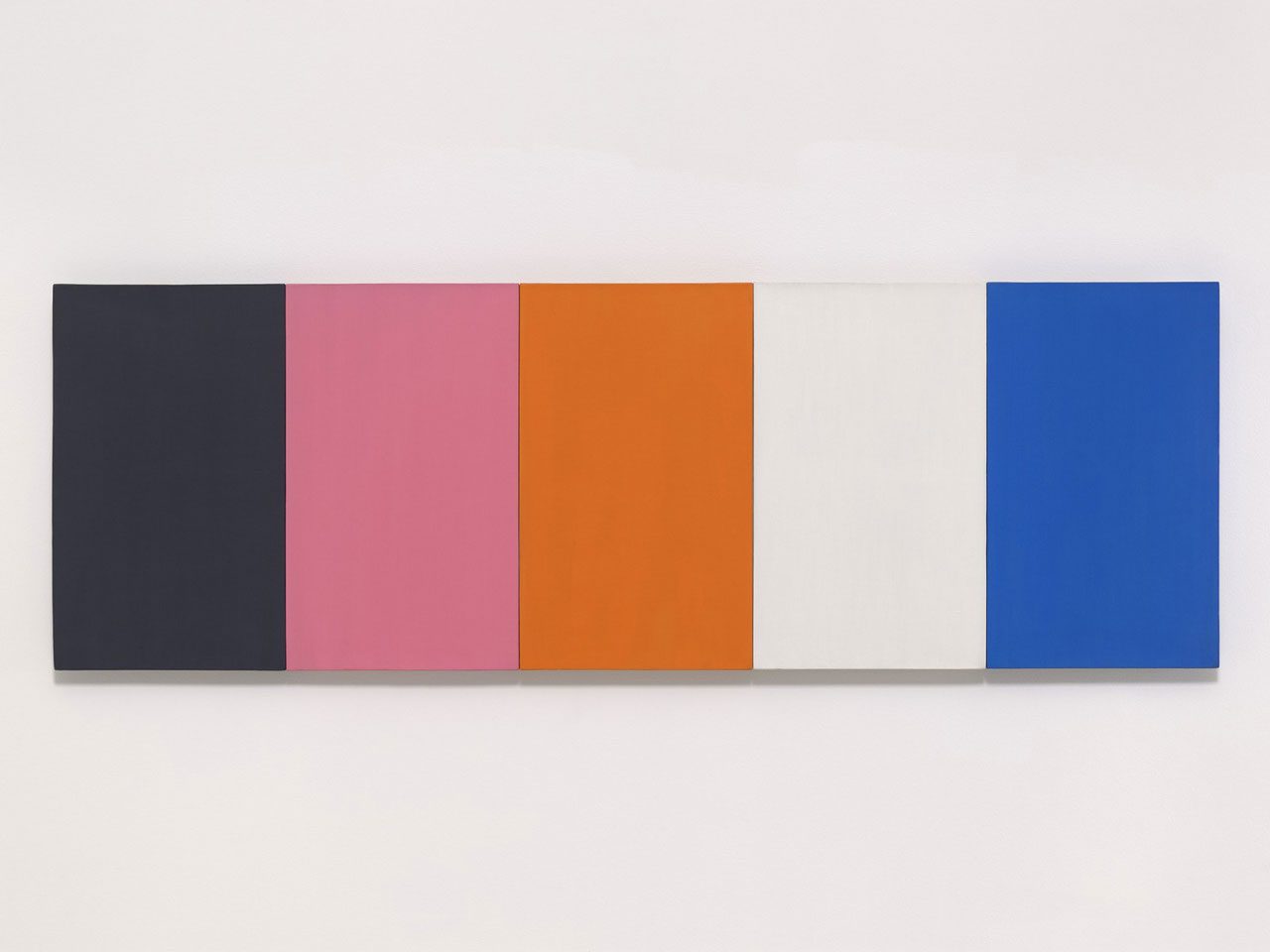
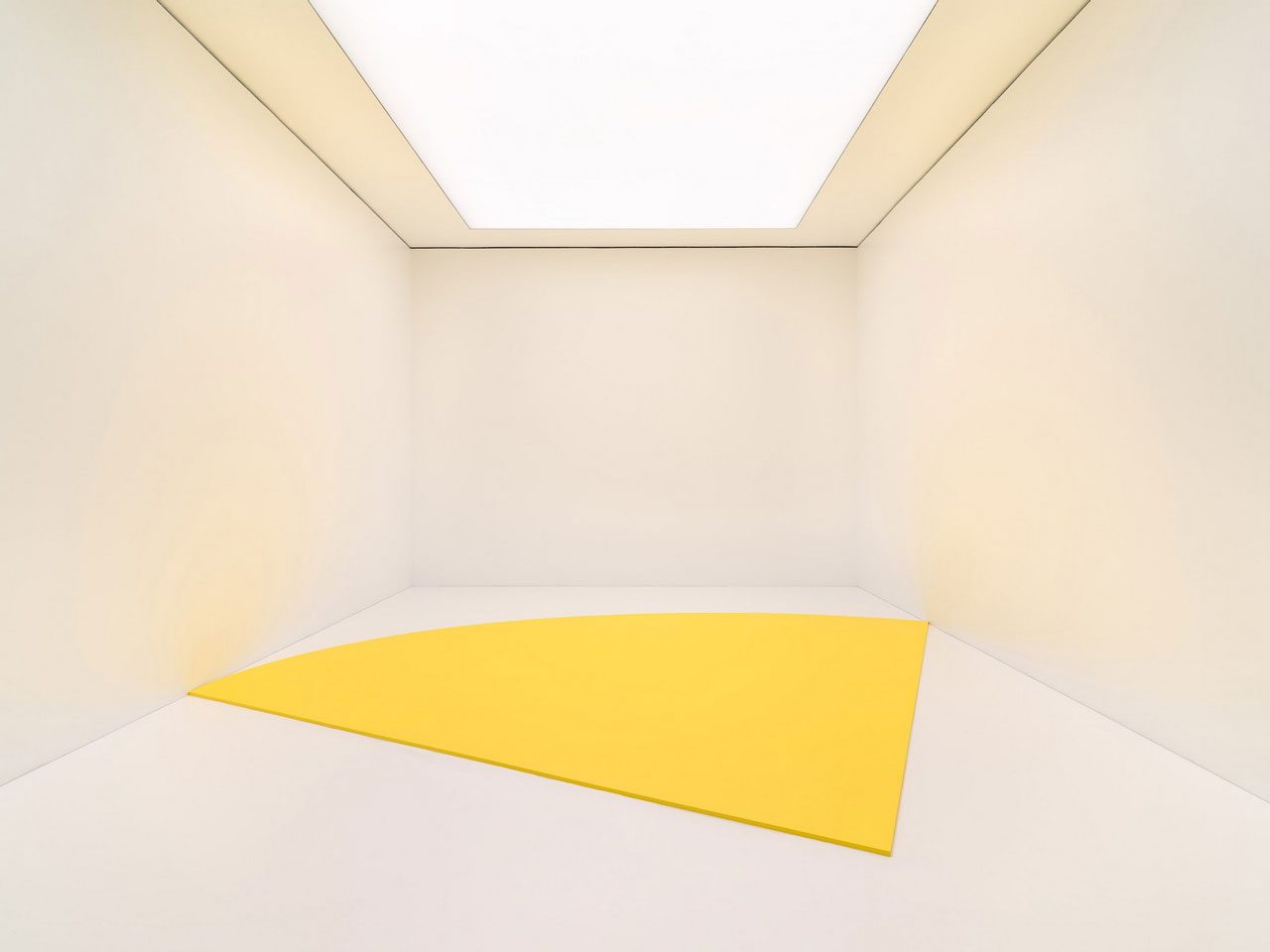
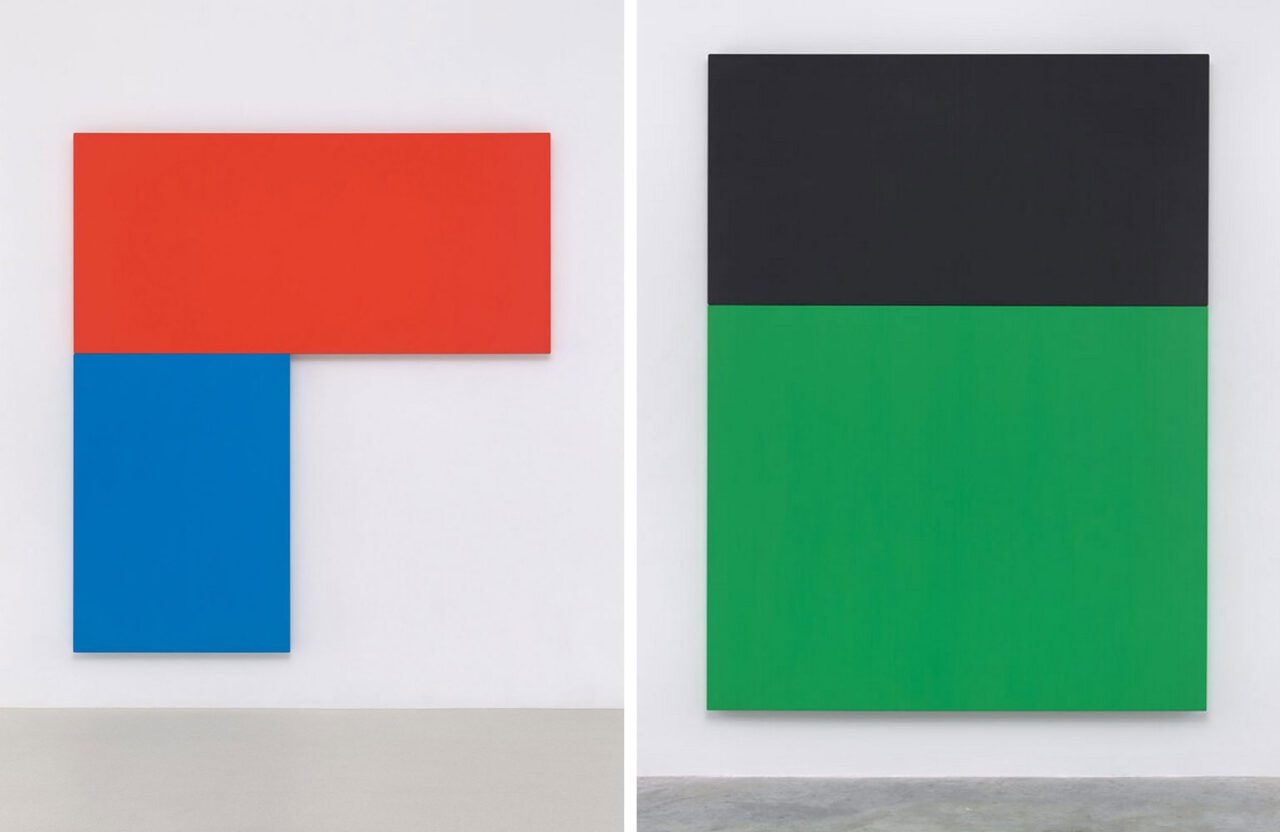
Right: Ellsworth Kelly, Black Green, 1970, oil on canvas, two joined panels, 110 x 84 inches (279 x 213 cm), © Ellsworth Kelly Foundation, Photo courtesy Matthew Marks Gallery
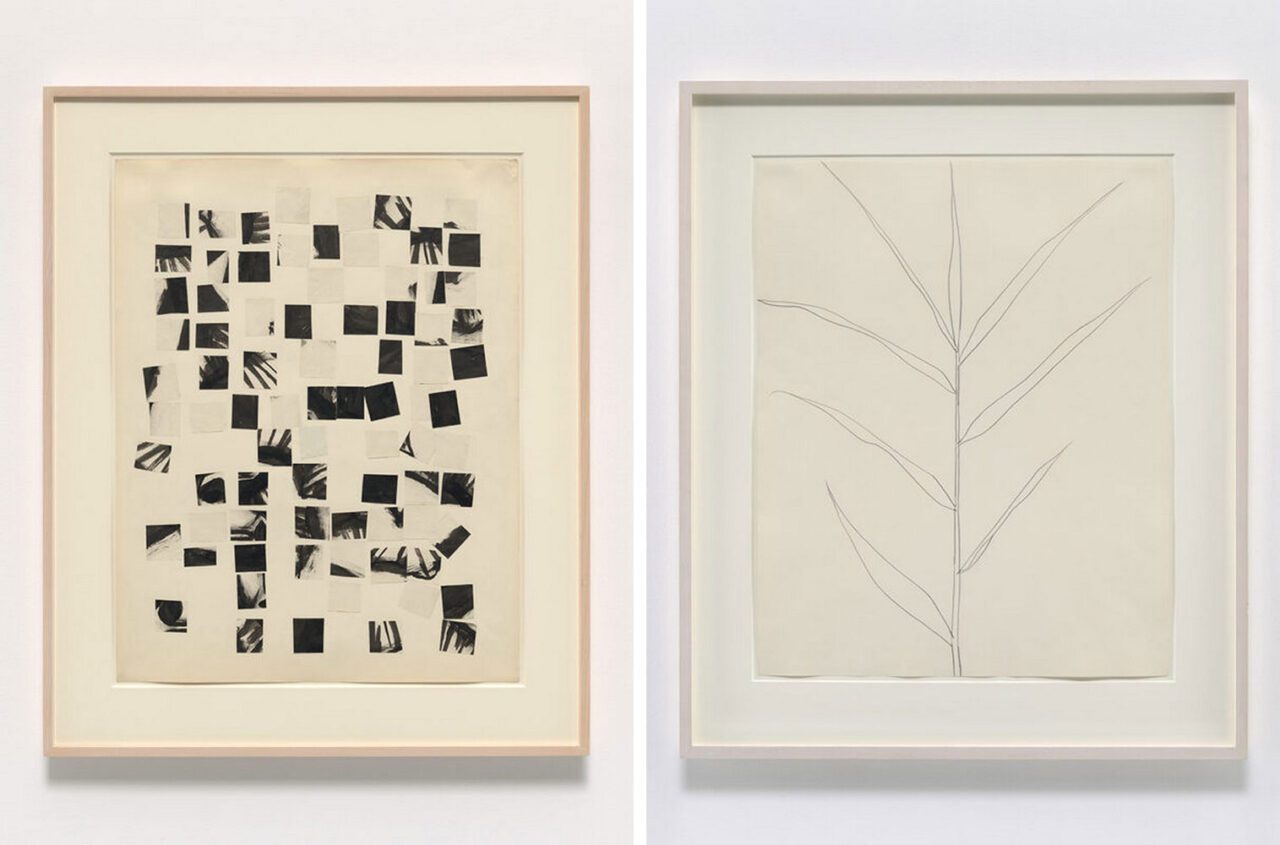
Right: Ellsworth Kelly, Grass, 1961, pencil on paper, 28 ½ x 22 ½ inches (72 x 57 cm), © Ellsworth Kelly Foundation
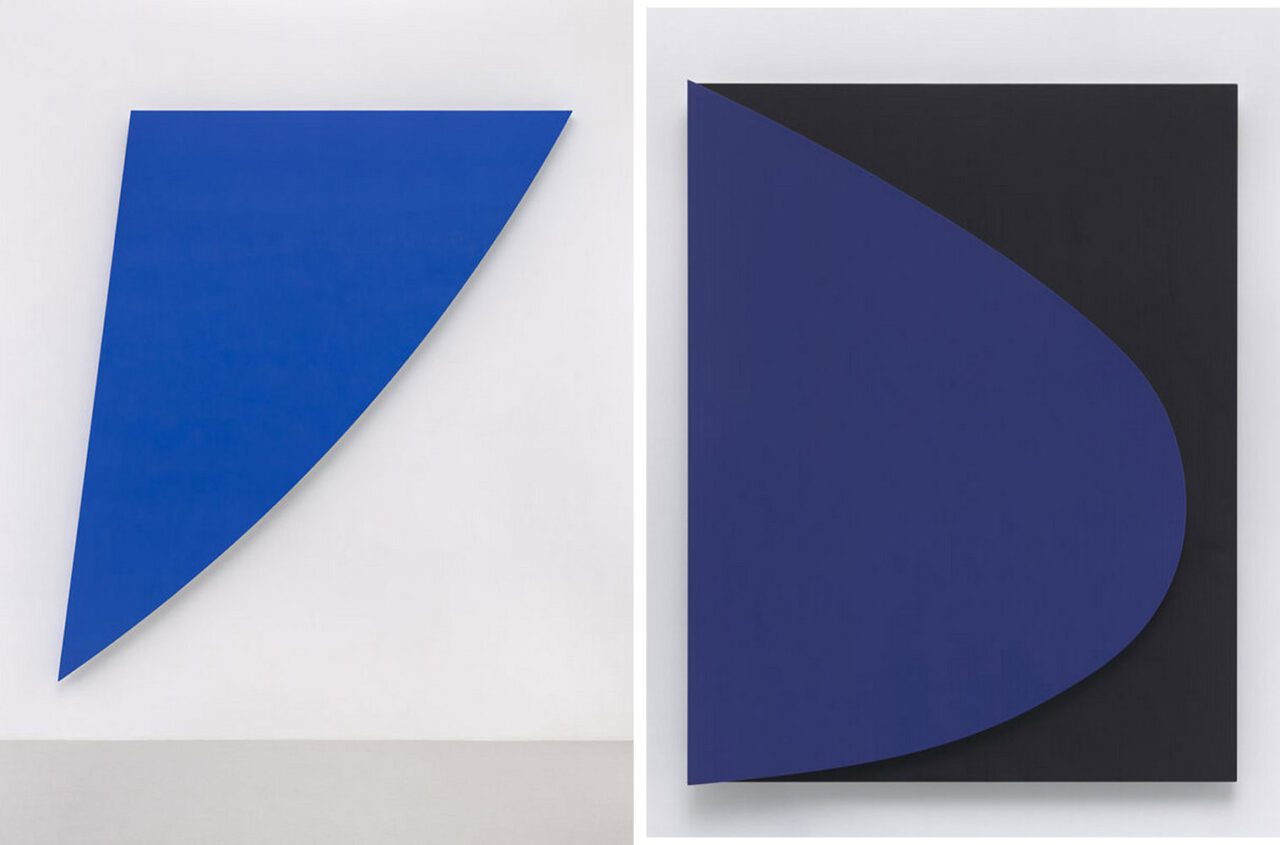
Right: Ellsworth Kelly, Blue Relief with Black, 2011, oil on canvas, two joined panels, 70 x 55 x 3 inches (178 x 139 x 7 cm), © Ellsworth Kelly Foundation, Photo: Ron Amstutz
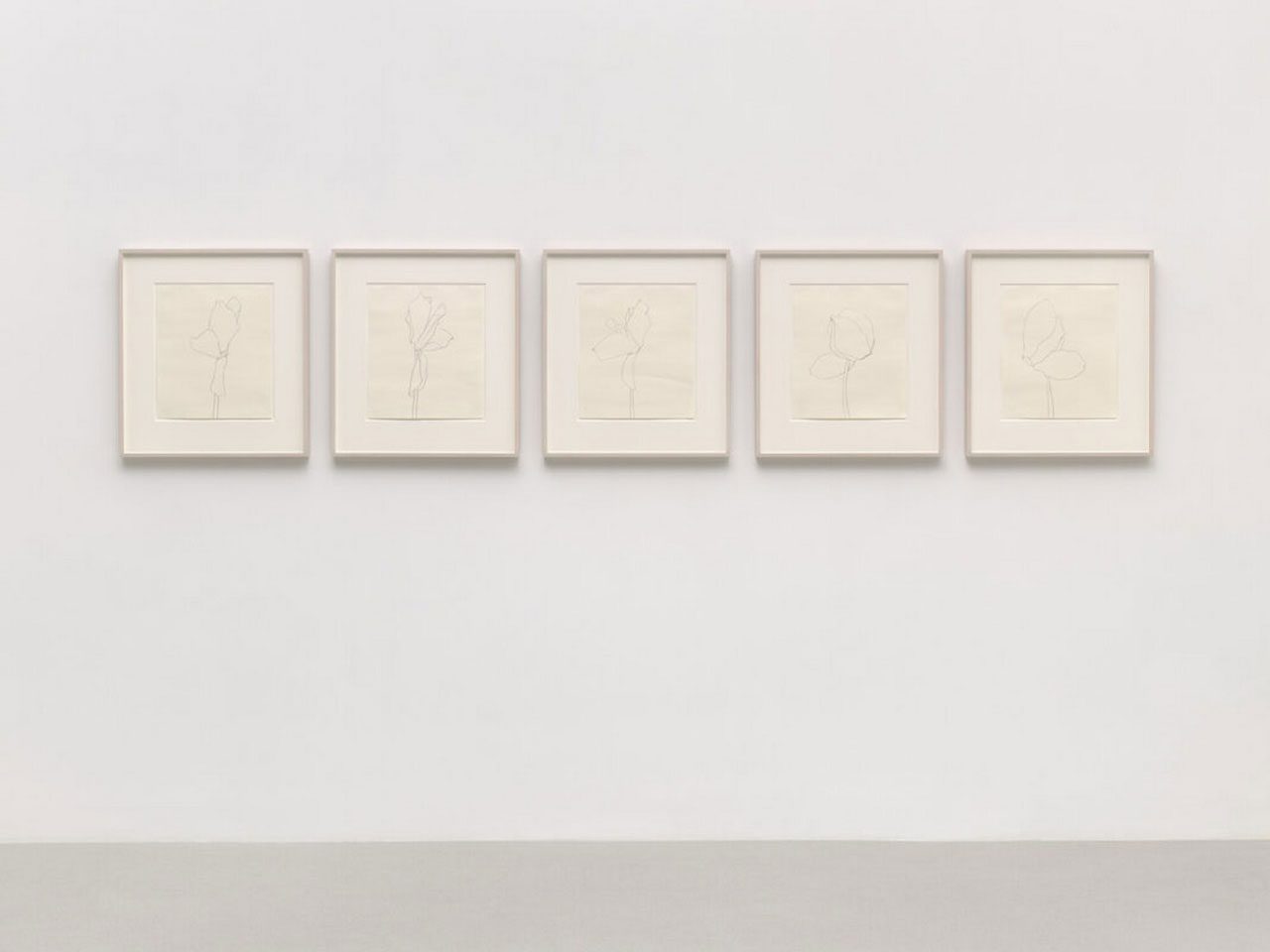

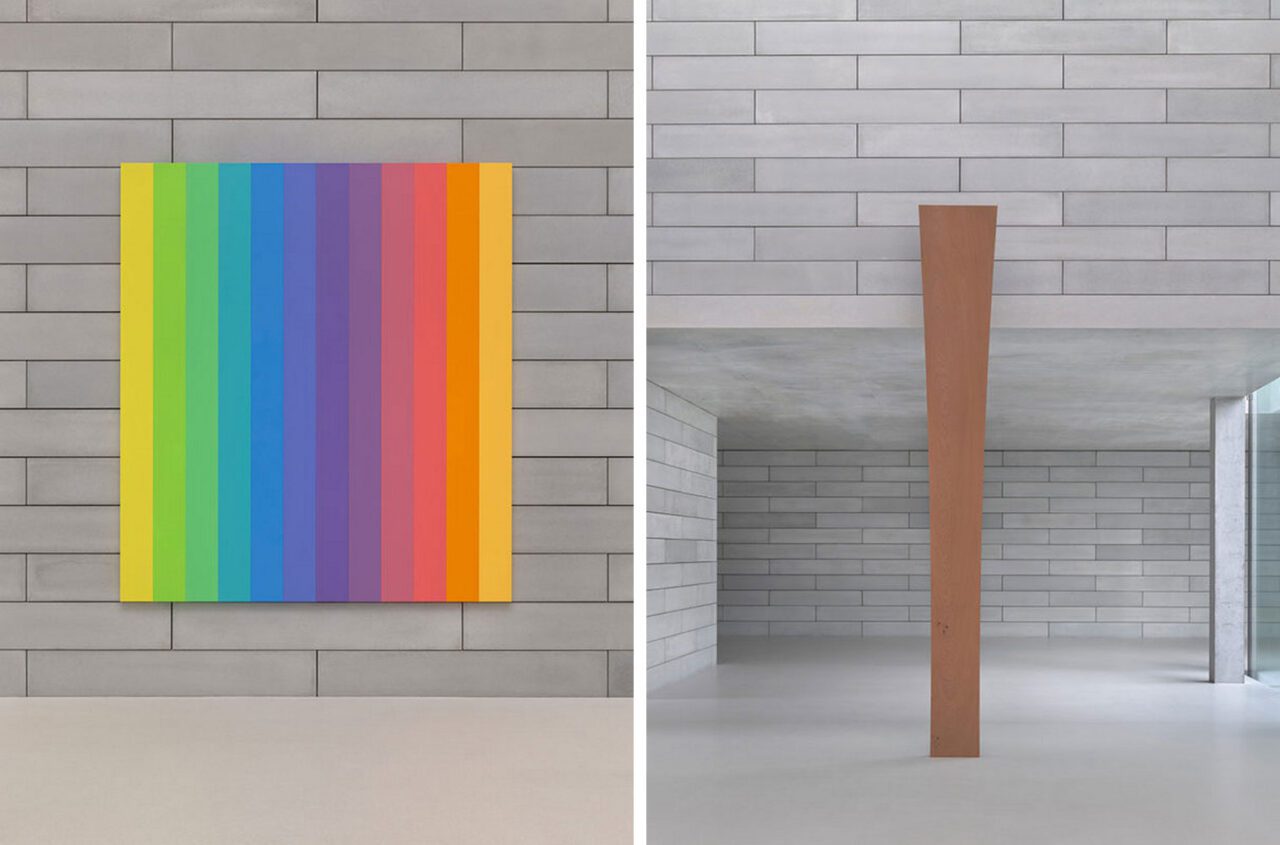
Right: Ellsworth Kelly Untitled, 1996, redwood, 176 ½ x 25 ½ x 4 ½ inches (447 x 65 x 12 cm, © Ellsworth Kelly Foundation, Photo: Ron Amstutz

